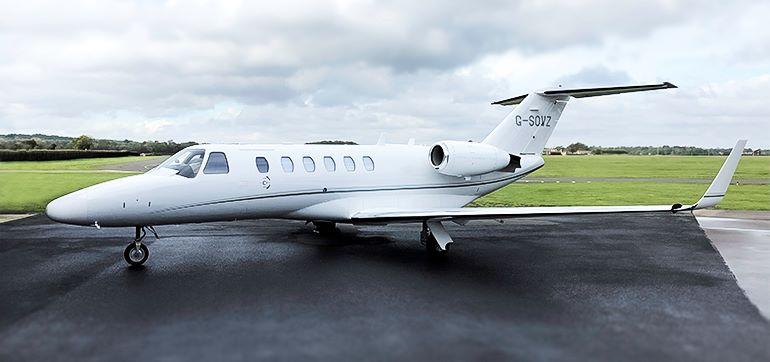
A Cessna Citation Jet was damaged but the pilot unharmed during an accident over the Gulf of Mexico March 30 when a Tamarack wingtip dislodged from its left wing.
The airline transport pilot operating the Part 91 corporate flight was not injured. The aircraft, registered to Minnesota Equipment Services in Blaine, Minnesota, has been released to be repaired and returned to service, according to Tamarack. Its owner is having the winglet replaced, the winglet provider says.
The aircraft had departed from Walnut Ridge Regional Airport in Arkansas, on a ferry flight headed for Page Field Airport in Fort Myers, Florida. The pilot was in a cruising descent at an altitude of about 30,000 ft. when he felt two “big jolts,” according to a preliminary report by the National Transportation Safety Board (NTSB). “He felt the airplane yaw, looked at the engine instruments, and noted no anomalies.” He also looked out the left side window and saw that the left winglet had separated from the wing.
He then disconnected the autopilot, reduced engine power, declared an emergency and landed at Tampa International Airport in Florida. There were “no flight control anomalies” but there was some “binding” of the ailerons on final approach. His flight was smooth until the “big jolts,” the NTSB says.
The aircraft was equipped with Tamarack Active Technology Load Alleviation System (ATLAS) winglets. Installation was completed on Dec. 7, 2022. In February 2023, the Tamarack Active Camber Surface Control Unit was replaced as a result of fault alerts during two separate flights, according to the NTSB.
“The pilot did not report any flight characteristic anomalies associated with the fault alerts,” it said in the report. In each case, he opened and reset the circuit breaker to the system, which cleared the faults then went on to land the aircraft without issue. No further anomalies were reported after the TCUs were replaced.
After the accident, an examination found that the aircraft had sustained substantial damage on the left wing extension and left aileron, and the left wing extension, Tamarack winglet and Tamarack Active Camber Surfaces were missing.
Despite the missing equipment, the pilot was able to control the aircraft and land “without issue,” the NTSB says.
“We are obviously grateful that nobody was injured in this strange event,” Jacob Klinginsmith, Tamarack Aerospace president, said in a statement. “We’re supporting the NTSB investigation to learn what happened in the air that would have caused the winglet and wing extension to be ripped from the aircraft.”
During certification, testing included a “one winglet removed” scenario simulating a bird strike, lightning strike, wake turbulence or other abnormal damage to the winglet. The company would expect the aircraft to handle well under these scenarios, officials say.
Tamarack has performed winglet upgrades to more than 180 Citation jets and has received strong interest from the military and airline industry, it says.
The NTSB will release a final report in the coming months.
